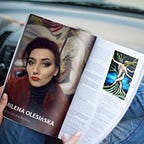Installation art and assemblage sculptore Edward Kienholz
Edward Kienholz (October 23, 1927 — June 10, 1994) was an American installation artist and assemblage sculptor whose work was highly critical of aspects of modern life. From 1972 onwards, he assembled much of his artwork in close collaboration with his artistic partner and fifth wife, Nancy Reddin Kienholz.
Despite his lack of formal artistic training, Kienholz began to employ his mechanical and carpentry skills in making collage paintings and reliefs assembled from materials salvaged from the alleys and sidewalks of the city.In 1958 he sold his share of the Ferus Gallery to buy a Los Angeles house and studio and to concentrate on his art, creating free-standing, large-scale environmental tableaux. He continued to participate in activities at the Ferus Gallery, mounting a show of his first assemblage works in 1959.
In 1961, Kienholz completed his first large-scale installation, Roxy’s, a room-sized environment which he showed at the Ferus Gallery in 1962. Set in the year 1943, Roxy’s depicts Kienholz’s memories of his youthful encounters in a Nevada brothel complete with antique furniture, a 30’s era jukebox, vintage sundries, and satirical characters assembled from castoff pieces of junk. This artwork later caused a stir at the documenta 4 exhibition in 1968.A 1966 show at the Los Angeles County Museum of Art (LACMA) drew considerable controversy over his assemblage, Back Seat Dodge ’38 (1964). The Los Angeles County Board of Supervisors called it “revolting, pornographic and blasphemous” and threatened to withhold financing for the museum unless the tableau was removed from view. A compromise was reached under which the sculpture’s car door would remain closed and guarded, to be opened only on the request of a museum patron who was over 18, and only if no children were present in the gallery. The uproar led to more than 200 people lining up to see the work the day the show opened. Ever since, Back Seat Dodge ’38 has drawn crowds. LACMA did not formally acquire the work until 1986.
